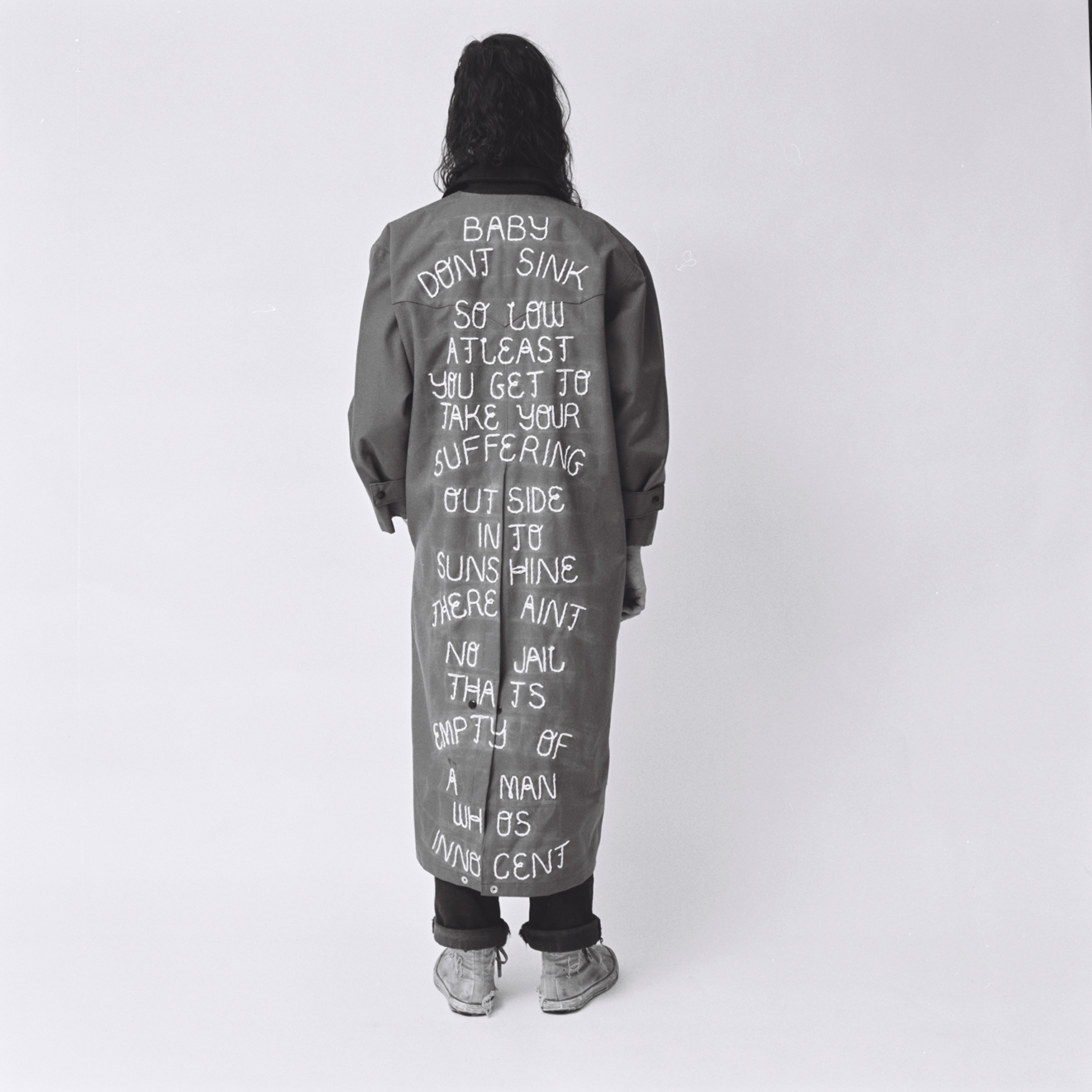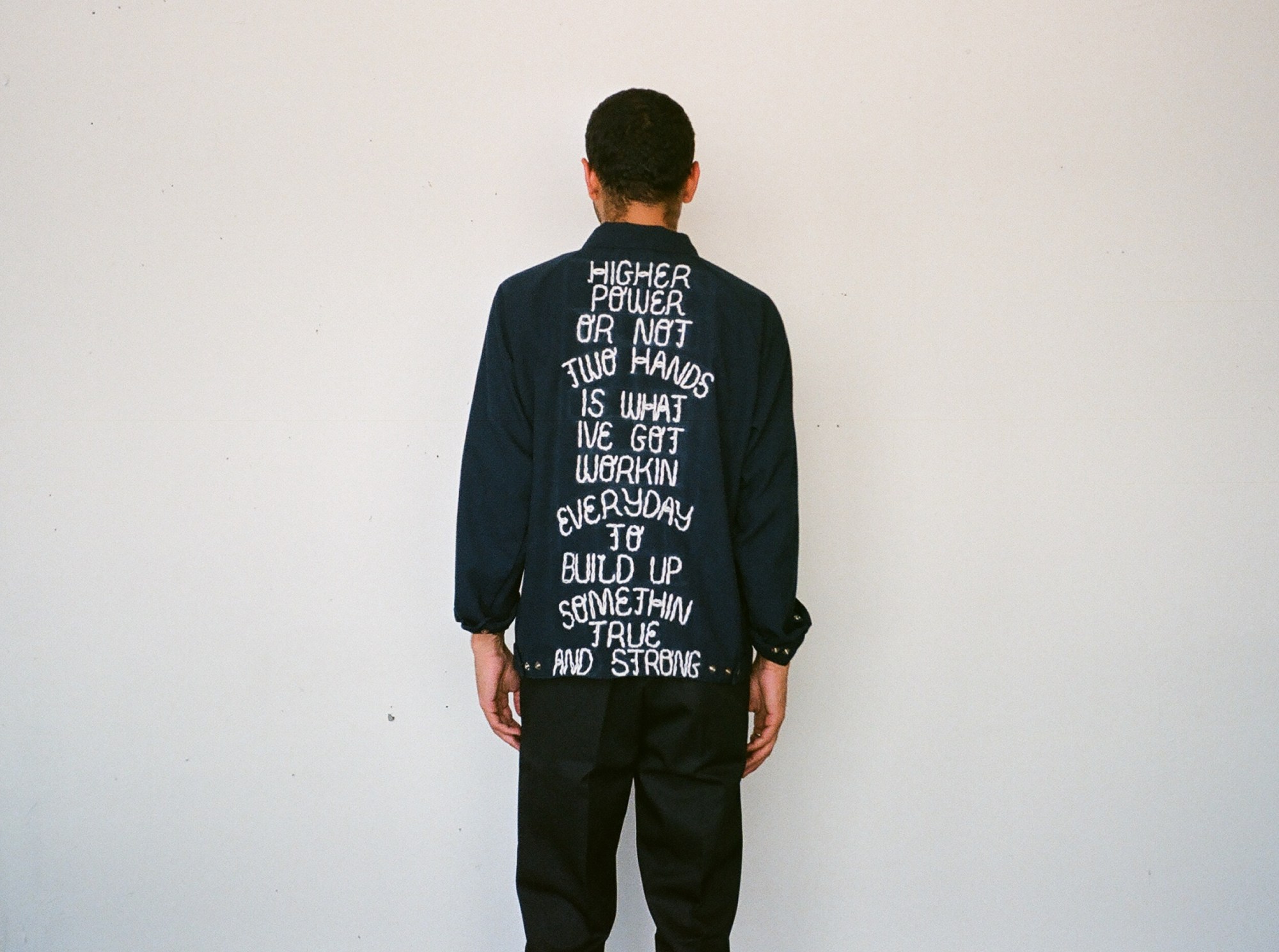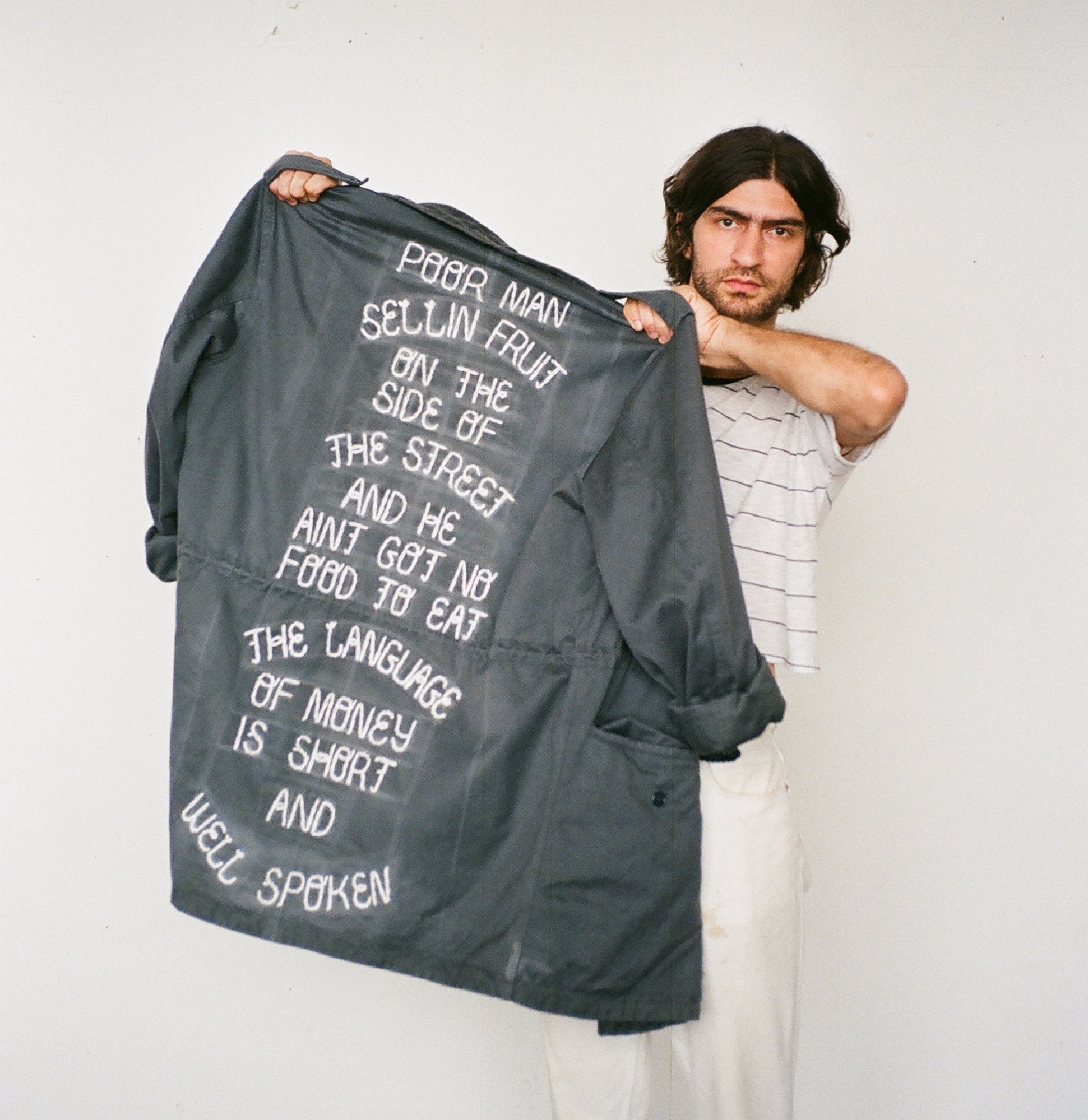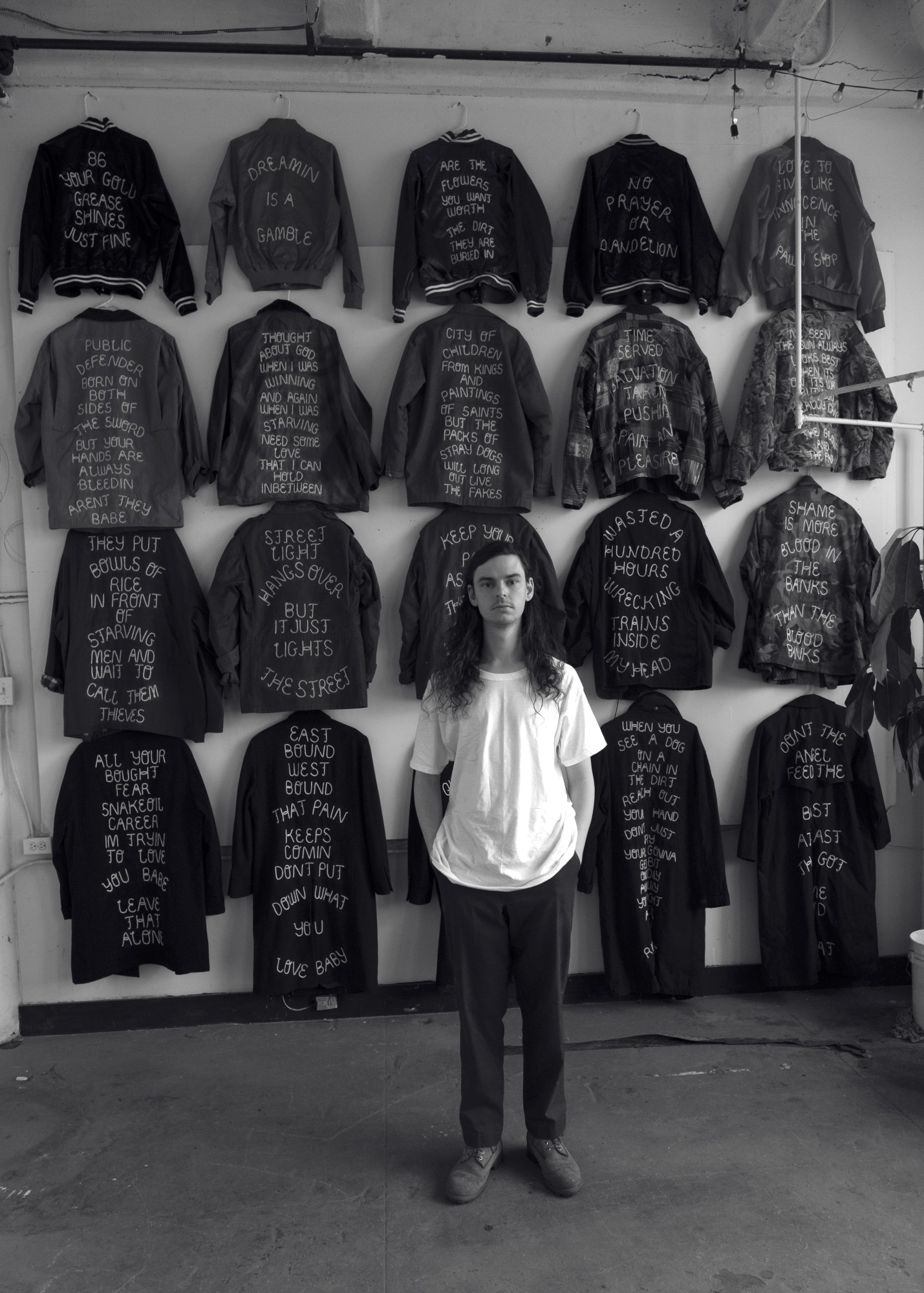At the age of 21, Henry Mowgli packed his bags and moved to New York City. Up to that point he’d spent his whole life living in Austin, TX, where he was raised by a single mom and worked the same job for seven years in a health food store. Sitting down for a chat on the back of his green Isuzu pick-up truck, Mowgli says, “It felt like a natural step. The second I got the idea in my head that I was moving to New York, I was just like, I’ve got to get there ASAP.”
He’s now been in New York for six years, and in many ways, the city has become his muse. Shortly after arriving he started embroidering slogans onto jackets and writing poems, like “East Bound West Bound That Pain Keeps Comin Don’t Quit The Things You Love,” on walls throughout the city.
“It’s very impulsive, it’s not thought out at all,” he says of his creative process. “It almost has a sense of urgency, as in, this is something I want to do right now.” That impulse led to the creation of his first embroidered jacket, with the words “No Prayer Or Dandelion,” which are lyrics from a song he wrote. However in the beginning, Mowgli never intended to become an expert in hand-stitched embroidery. It was only after several failed attempts to find an affordable manufacturer that he decided to do it himself. “I called around some spots in Chinatown and the Garment District and everybody gave me prices that were out of my price range,” he explains, “so I was like, well I guess I’ll just figure out how to do this. So I watched a video online.”

Making the first jacket was incredibly time-consuming, and Mowgli remembers telling himself, “I’m never going to do that again.” But the impulse kept returning, and he’s now embroidered dozens of jackets, the majority of which are housed in a storage unit. They were exhibited and available for purchase last year at Chinatown Soup, a gallery on New York’s Lower East Side, but Mowgli says outside of the gallery he struggles with the idea of selling them. “It’s something that I wrestle with all the time,” he says, “because each piece — depending on how many words there are — takes between 35 and 80 hours, and by the time I’m done with it I care more about each piece than the money.”
Each jacket is a one-off and several of Mowgli’s friends own them, but right now the chances of one ending up in your wardrobe is very slim. Mowgli says he fields requests for jackets almost daily, but so far he’s resisted the urge to capitalize on the demand. “When people ask me, ‘how much are they?’ I’m just like, I don’t even know,” he says candidly. “Think about how much money you’d want to make if you worked two full-time jobs a week?”

Though he says he’s not opposed to selling the jackets in the future, right now he prefers to keep his art separate from the work he does for a living. New York is a city of opportunity, and Mowgli sees it as blessing to be able to make art in a place that allows you to do almost anything to get by. Since moving to New York in 2012 he’s worked as a bartender, a barista, a commercial PA and an art handler, and that’s just the jobs on record.
“Having this truck I can make money, especially around the first of the month because everybody is always moving and no one has a vehicle. You just go on Craigslist. I’ll drive strangers to IKEA, or sometimes it will seriously be like going from the north side to the south side. It takes me 10 minutes. I think the longer you stay here, the more tools you get in your toolbelt to hustle up. And then on [my] days off I just sit in my room and make these jackets. I’m so grateful for that opportunity here, because you can’t do that in a lot of cities. A lot of cities you can’t make money off of having a little single-cab truck.”

Mowgli also makes artwork in the form of wallball flower paintings, which he does by dipping a ball in paint and applying it to a canvas. The idea was born out of New York street culture, and watching people play a sport he’d not seen anywhere else before. “I used to have a studio in Greenpoint and there was always these people out there playing wallball, which is a very New York thing to me,” he says. “They sell those balls in the bodega, so I just bought one one day.” He keeps his largest wallball flower painting rolled up due to a lack of storage space, but he says in an ideal world he’d love to paint an entire building. He points across the street towards a school and says, “If we could do this whole building right here, then I would love to do that.”
But right now Mowgli is focused on the jackets. He mentions politics as one reason for it — “politically, it’s a really stressful time, and the jackets are more clear and speak for themselves” — but also repeats that no one thing dictates his approach. Asked if the slogans have become more political, he says, “it’s not so much of a direct path… but I’m sure it has seeped in, because everything seeps in. That’s the thing about New York, you can walk around and there’s so much room for stuff, it’s so diverse, so you can really take in so much.” So as you wander around New York this summer, keep an eye out for one of Henry Mowgli’s slogans adding to that diversity.
